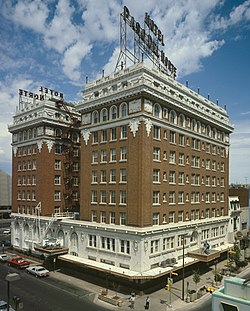
Trost & Trost Architects & Engineers, often known as Trost & Trost, was an architectural firm based in El Paso, Texas. The firm's chief designer was Henry Charles Trost, who was born in Toledo, Ohio, in 1860. Trost moved from Chicago to Tucson, Arizona in 1899 and to El Paso in 1903. He partnered with Robert Rust to form Trost & Rust. Rust died in 1905 and later that year Trost formed the firm of Trost & Trost with his twin brother Gustavus Adolphus Trost, also an architect, who had joined the firm as a structural engineer. Between 1903 and Henry Trost's death on September 19, 1933, the firm designed hundreds of buildings in the El Paso area and in other Southwestern cities, including Albuquerque, Phoenix, Tucson, and San Angelo.
Contents

Throughout his career, Henry Trost demonstrated his ability to work in a variety of styles, including Art Deco, Mission Revival, Prairie, Pueblo Revival, and Bhutanese Dzong architecture, at the University of Texas at El Paso. Many of the buildings designed by Trost & Trost display an influence from the Chicago School of architecture. Henry Trost had lived in Chicago between 1888 and 1896. In 1889, Henry started the American Art Metal Work Company with Emil Henry Seeman, which lasted about a year.

From 1892 to 1896, Trost served as vice president of Chicago Ornamental Iron Company. The company is associated with metal ornament that formed the front railings of the boxes and balconies in the Lafayette Square Opera House in Washington, DC.




